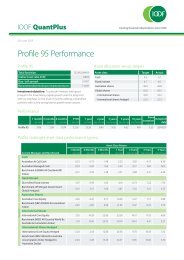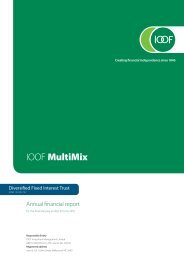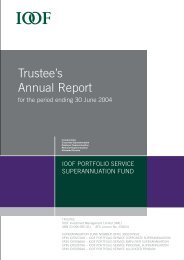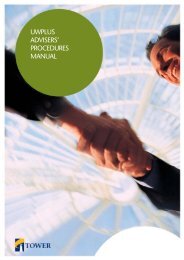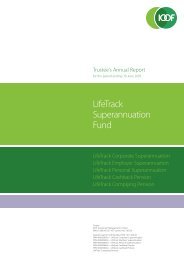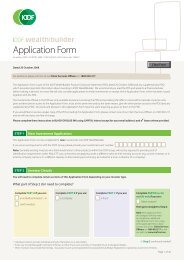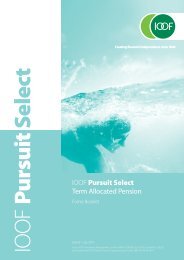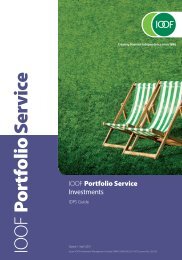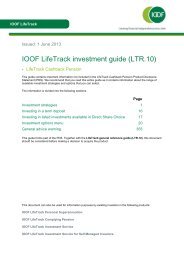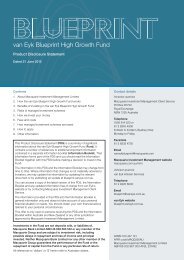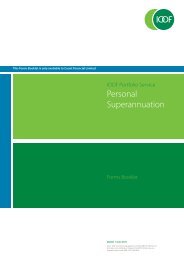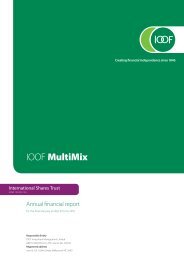annual report 2011
annual report 2011
annual report 2011
Create successful ePaper yourself
Turn your PDF publications into a flip-book with our unique Google optimized e-Paper software.
IOOF | <strong>annual</strong> <strong>report</strong> <strong>2011</strong><br />
Notes to the financial statements (cont’d)<br />
For the year ended 30 June <strong>2011</strong><br />
Impaired receivables<br />
As at 30 June <strong>2011</strong>, receivables of the Group with a nominal value of $32,000 (2010: $30,000) were impaired. The amount of the<br />
impairment provision was $32,000 (2010: $30,000). The individually impaired receivables mainly relate to amounts receivable<br />
from clients.<br />
The ageing of these impaired receivables is as follows: Consolidated Parent<br />
<strong>2011</strong> 2010 <strong>2011</strong> 2010<br />
$’000 $’000 $’000 $’000<br />
0 to 180 days - - - -<br />
181 to 360 days - - - -<br />
1 to 3 years - - - -<br />
Greater than 3 years 32 30 - -<br />
32 30 - -<br />
Movements in the provision for impairment of receivables are as follows: Consolidated Parent<br />
<strong>2011</strong> 2010 <strong>2011</strong> 2010<br />
$’000 $’000 $’000 $’000<br />
Balance at beginning of the year 30 187 - -<br />
Provision for impairment recognised 2 12 - -<br />
Receivables written off as uncollectible - (162) - -<br />
Release of provision - (7) - -<br />
Balance at end of the year 32 30 - -<br />
The amount of the provision for impairment is recognised in profit or loss in other expenses. When a receivable for which an<br />
impairment allowance had been recognised becomes uncollectible in a subsequent period, it is written off against the allowance<br />
account. Uncollectible receivables are where there is no expectation of recovering additional cash.<br />
(c) Liquidity risk<br />
Liquidity risk relates to the Group having insufficient liquid assets to cover current liabilities and unforeseen expenses.<br />
The Group maintains a prudent approach to managing liquidity risk exposure by maintaining sufficient liquid assets and an ability<br />
to access a committed line of credit. It is managed by continuously monitoring actual and forecast cash flows and by matching the<br />
maturity profiles of financial assets and liabilities. Temporary surplus funds are invested in highly liquid, low risk financial assets.<br />
The Group had access to un-drawn bank borrowing facilities at the balance date, on the terms described and disclosed in Note 22<br />
Borrowings.<br />
The liquidity requirements for licensed entities in the Group are regularly reviewed and carefully monitored in accordance with those<br />
licence requirements.<br />
page 70



